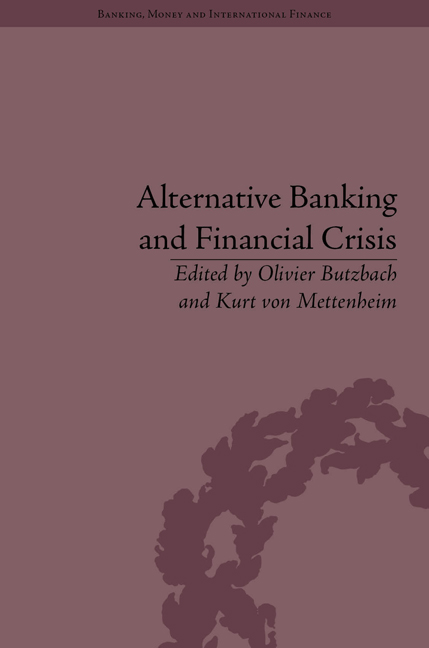Book contents
- Frontmatter
- CONTENTS
- Acknowledgements
- List of Contributors
- List of Figures and Tables
- Introduction
- Part I Historical Context and Conceptual Framework
- Part II Comparative Country Cases
- 5 A Qualitative and Statistical Analysis of European Cooperative Banking Groups
- 6 The Persistence of the Three-Pillar Banking System in Germany
- 7 Alternative Banks in a Dualistic Economy: The Case of Italy before and during the Euro Crisis
- 8 Alternative Banks on the Margin: The Case of Building Societies in the United Kingdom
- 9 The United States: Alternative Banking from Mainstream to the Margins
- 10 BRIC Statecraft and Government Banks
- 11 Cooperative Banks in India: Alternative Banks Impervious to the Global Crisis?
- Conclusion
- Notes
- Index
9 - The United States: Alternative Banking from Mainstream to the Margins
from Part II - Comparative Country Cases
- Frontmatter
- CONTENTS
- Acknowledgements
- List of Contributors
- List of Figures and Tables
- Introduction
- Part I Historical Context and Conceptual Framework
- Part II Comparative Country Cases
- 5 A Qualitative and Statistical Analysis of European Cooperative Banking Groups
- 6 The Persistence of the Three-Pillar Banking System in Germany
- 7 Alternative Banks in a Dualistic Economy: The Case of Italy before and during the Euro Crisis
- 8 Alternative Banks on the Margin: The Case of Building Societies in the United Kingdom
- 9 The United States: Alternative Banking from Mainstream to the Margins
- 10 BRIC Statecraft and Government Banks
- 11 Cooperative Banks in India: Alternative Banks Impervious to the Global Crisis?
- Conclusion
- Notes
- Index
Summary
Introduction
Banks in the market-centred financial system of the US remain, paradoxically, exception and paradigm. Like past cycles of financial speculation and crisis, bank changes in the US since the 1980s have marginalized alternative banks and traditional banking (that of accepting deposits and making loans). Instead, liberalization and deregulation have increased disintermediation. Private banks in the US tend to place household savings and pensions directly in a variety of products and services based on securities and derivatives. In historical perspective, the exceptional structure of US banking is ‘largely due to a different political history’. Alexander Hamilton looked to the Bank of England as a model. However, opposition from federalists and democrats led to ‘bank war’ and the veto of the Second Bank of the United States charter by President Jackson in 1832. Thereafter, ‘aversion to powerful institutions of any kind’, especially big banks, is widely cited as causing financial instability through the early twentieth century. Political events also reinforced capital market-based banking. Histories of US banking place the Civil War and World War I at the centre of explanations for the emergence of money centre banks and capital market deepening in New York.
US banking history turns on crises caused by commercial banks and financial market bubbles (1837, 1857, 1873, 1884, 1893, 1907, 1929).
- Type
- Chapter
- Information
- Alternative Banking and Financial Crisis , pp. 169 - 178Publisher: Pickering & ChattoFirst published in: 2014

